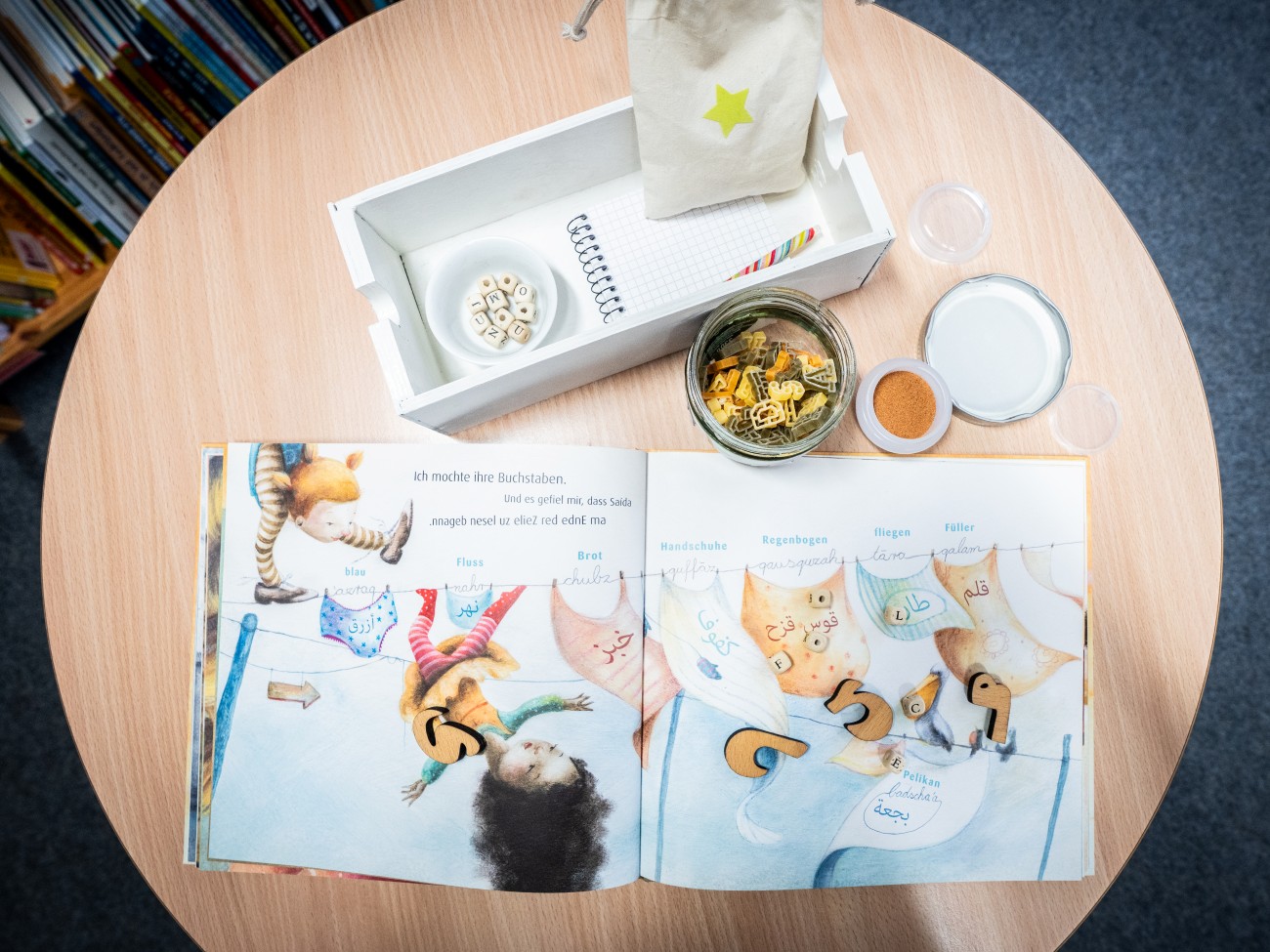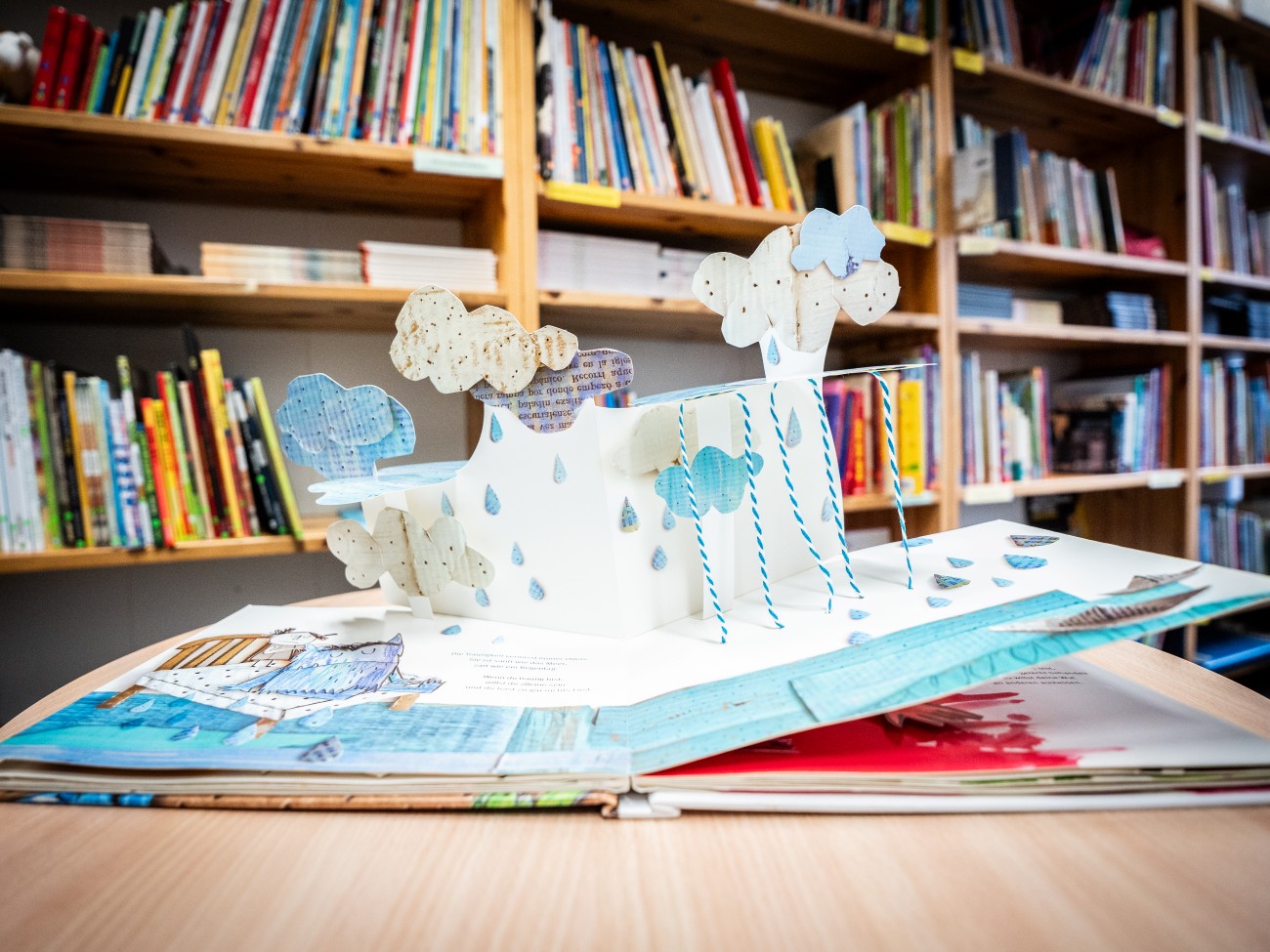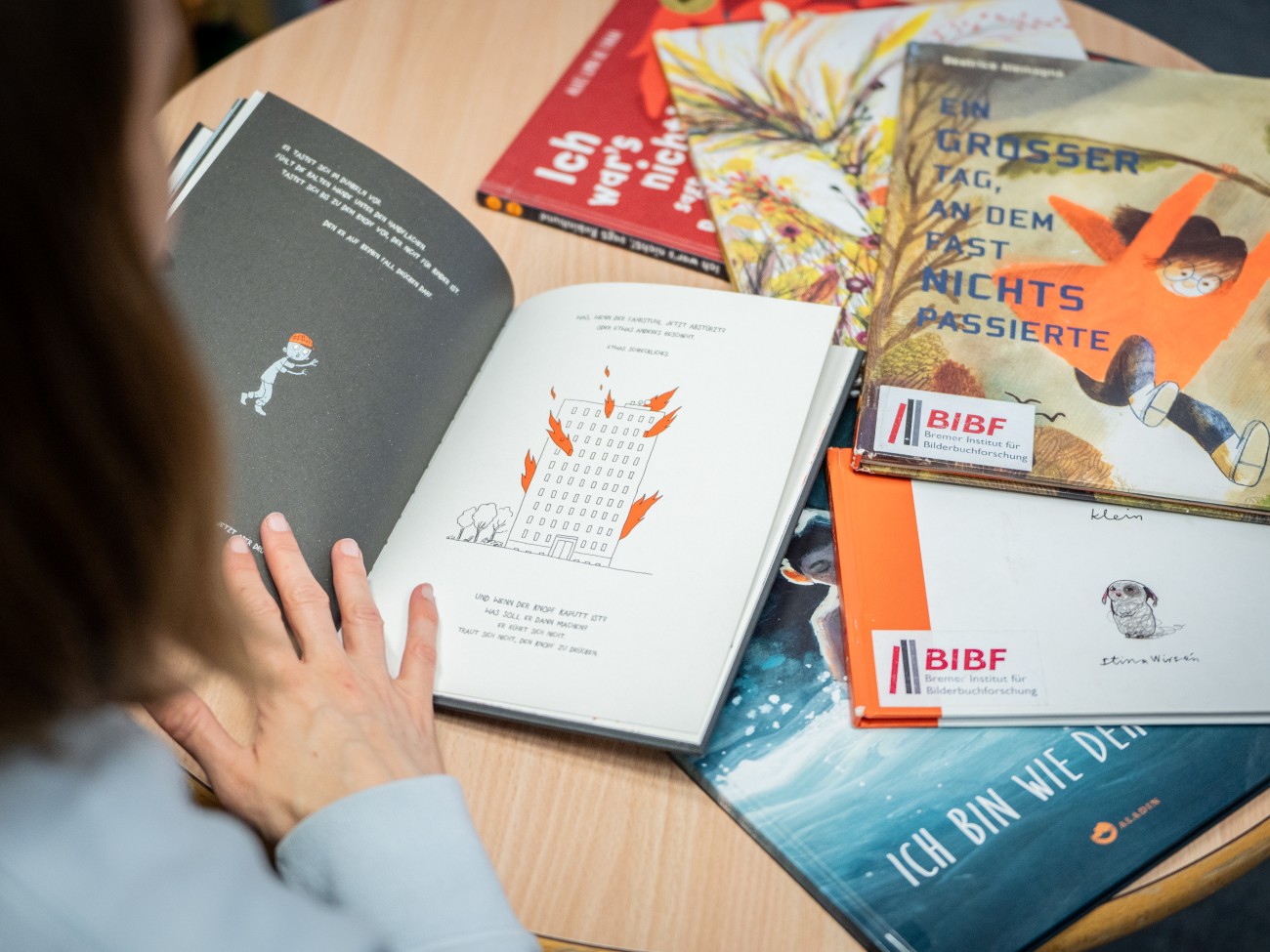
© Annemarie Popp / Universität Bremen
Have You Heard of… the Picture Book Library?
There is a special treasure trove of books in GW2 building – 2,000 picture books can be found at the Institute for Picture Book Research
Almost every child is familiar with The Snow Queen, The Princess and the Pea, and The Ugly Duckling, which are part of the fairy tale collection created by Hans Christian Andersen. To commemorate his legacy, International Children’s Book Day is celebrated on April 2, the Danish author’s birthday. To mark this occasion, up2date. interviewed Dr. Elisabeth Hollerweger, director of the picture book library, about trends in the children’s book market, about the work of students in teacher education, and about the activities of the University of Bremen’s Institute for Picture Book Research (BIBf).
Ms. Hollerweger, why does the University of Bremen have a picture book library?
The picture book library is the heart of the Bremen Institute for Picture Book Research, which belongs to the Faculty of Pedagogy and Educational Sciences. Accordingly, our research, teaching, and outreach activities focus on the potential picture books have to support teacher education, and explore their diverse uses and applications. In literary research, we investigate how picture books, the topics they address, and the connected means of representation have changed over time and what conclusions we can draw from this about society and the prevailing views on childhood. In teaching methodology research, however, we look at the role picture books play in speech and reading development or literary education. To make contemporary picture books more accessible in the classroom, we work with students to create teaching materials and reduce the barriers to using new books. We also offer targeted workshops for schools, day care centers, and training institutions. To do this effectively, we need a comprehensive and regularly updated collection of picture books.
We are also a meeting point for anyone who is interested in picture books, whether they are students, volunteers who read aloud at day care centers, or parents – everyone can borrow and discuss books.
What trends or movements have you noticed in particular in the last few years?
Picture books always mirror social currents. That is why it is important to consider such “trends” in the wider context of developments in society. In the aftermath of the pandemic, which was shown to have been emotionally distressing, there has been an increase in the number of books that focus on children’s negative feelings and psychological impairment. While previous representations of depression focused primarily on mothers and, occasionally, fathers, many works now take a look at the psyche of children, and use visual and narrative strategies to depict their feelings of unease.
At the latest with the Fridays for Future movement, a trend towards addressing sustainability in picture books emerged. However, these often cast children in the role of saviors of the world, and this must be viewed critically. On the one hand, such books replace engaging stories with platitudinous messages, and on the other hand, children are being assigned responsibilities that in no way reflect their abilities and societal roles. The large number of lousy picture books on sustainability is a good example that well intentioned does not mean well executed.

© Annemarie Popp / Universität Bremen
What do you do with such observations and realizations?
My initial shock reaction is usually to contact the publishers and try to explain what I find problematic about the individual book. Unfortunately, the publishers’ standards are often guided by other factors than ours, and they publish what sells. Apparently, that means catchy calls for saving the world. This observation is, of course, something we address in our research and critically examine in our teaching. In doing so, we try to make a virtue out of necessity and equip our students with the skills to select children’s literature based on worst-case scenarios.
Teacher education students stock up on picture books in your library that they then discuss with a school class. How do you support them with this?
The picture book library is connected to several different seminars, which means that students get to know a broad range of possible applications and didactic concepts for using picture books throughout the course of their degrees. These are then tested in practical phases, although we, of course, look together with the class teams at which works are suited. When selecting books for use in classrooms, we look at both the interests and needs of the children as well as the educational plans. Especially in an inclusive school system such as in Bremen, it is important to use books that can be made accessible on several levels. When we look at a book, we are not just looking at a single text – we are considering elements that potentially include multiple senses, languages, and media. We also consider the range of cognitive and creative tasks that schoolchildren can be given to choose from. For instance, one child might analyze the characteristics or emotions of a main character, while another child might draw a picture of or create a scene featuring this character. This approach allows all students to engage with the book, regardless of their prior knowledge or learning abilities. Throughout the practical phase, we offer support to students, and sometimes, these experiences even lead to research projects that can be developed into final thesis projects.

© Annemarie Popp / Universität Bremen
How is research at the BIBf set up?
One goal is to get students excited for picture book research, which is then reflected in the aforementioned theses. It is particularly important to me as director of the institute that students’ excellent work does not land in a drawer in my office, but gains visibility. This is why I try to ensure that results are published in academic journals. Of course, colleagues from different faculties with varying epistemic interests in children’s literature also support us, and ideally, these interests converge.
Besides research, what projects are representative of the work in BIBf?
We bestow the HUCKEPACK (piggyback) award each year to honor picture books. This idea was developed as a collaboration of my predecessor, Jochen Hering, with the “Vorlesen in Familien” (reading aloud in families) project initiated by the Wetzlar library Phantastische Bibliothek. We have several jury meetings each year with the team in Wetzlar to discuss various questions and determine which character in a story is figuratively being carried piggyback, by whom, and how – and to what extent the story itself can be seen as carrying readers on its back. By now, the award is so well known that it is commonly included in publishers’ catalogs, often accompanied by the logo. While the German Youth Literature Prize for Picture Books primarily awards innovative storytelling techniques, the HUCKEPACK award focuses on the recipients. Books that handle complex topics or unconventional presentation methods, and thereby are not as successful in stores, can be, and often are, exactly the books with HUCKEPACK potential. For example, we once gave the award to a book about domestic violence. Of course, there is no target audience for this topic. The Klett-Verlag, which is one of the most engaged publishers in the industry, sent out a call to action or rather call for help on Facebook because the book had not sold well. After this award, the sales figures rose. We are able to make books visible with our award that might tank in book sales otherwise.
We are also pursuing this goal with our Bremen Bilderbuch-Gespräche (picture book conversations) podcast, in which we connect analytical and didactic perspectives and have invited several prominent figures in children’s literature – including illustrators, publishing representatives, and researchers.
We also participate in the Stadtbibliothek’s Literary Week of Bremen’s libraries each January, and invite picture book illustrators to Bremen.

© Annemarie Popp / Universität Bremen
Further Information
More information about the Bremen Institute for Picture Book Research (BIBf) and their picture book library can be found on their website (in German only).